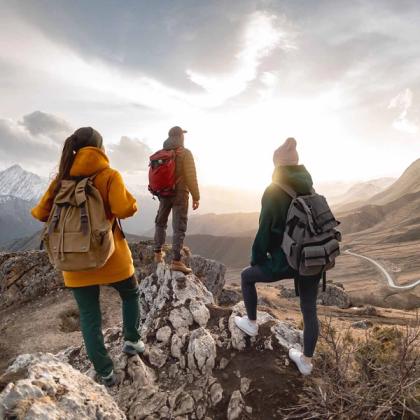Ep 118 – Altitude medicine: the role of the expedition doctor

Posted 15 Aug 2024
Dr James Waldron, Dr Rashbal Ghattaora
Global travel offers many opportunities for adventure – but some come with medical considerations. An infrequent but important consultation is altitude medicine for people planning to travel to areas high above sea level. In episode 80, Dr James Waldron and Dr Rashbal Ghattaora talked about how to approach a travel consultation, with notes on relevant medications and counselling. In this episode, they consider the role of medics travelling with groups at high altitude – ideal information for those interested in becoming an expedition doctor.
Key references
- NHS. 2023. https://www.nhs.uk/conditions/altitude-sickness/.
- Fitfortravel. https://www.fitfortravel.nhs.uk/advice/general-travel-health-advice/altitude-and-travel.
Key take-home points
- Expedition course organisers may run medical training for healthcare professionals interested in working with groups at high altitude.
- An expedition doctor is working 24/7 and group members mostly feel unwell at night.
- Ensure you look after yourself as well as the group, have an assistant help you and ensure you are fed. Store emergency snacks.
- It is important to understand the impact that altitude has on physiology.
- Fitness is important for an expedition doctor; swimming is a good cardiovascular exercise to train for altitude.
- Look into indemnity cover for the work you will do on an expedition, and make sure your personal trip insurance includes the appropriate altitude.
- Take appropriate precautions for your trip and have a clear understanding of the itinerary.
- Some trips may include acclimatisation or rest days, which make it less likely that participants will get altitude sickness.
- There are options for preventive medicines such as acetazolamide.
- Be clear on the process for evacuation procedures and how they vary at different stages of the trip.
- If someone becomes unwell, take a detailed baseline history and check their oxygen saturation to distinguish altitude sickness from other issues such as infection, dehydration or low blood sugar.
- There are two types of life-threatening altitude sickness: high-altitude pulmonary or cerebral oedema (HAPE or HACE).
- Participants with HAPE or HACE cannot continue with the expedition; the preference is to descend to a lower altitude at the earliest opportunity.
- HAPE is characterised by fatigue, dyspnoea and a dry cough with exertion.
- If left untreated, HAPE can progress to dyspnoea at rest, rales and cyanosis.
- Oxygen can be given to help a participant recover from HAPE; another option is a portable hyperbaric bag to help buy some time for evacuation.
- Nifedipine or sildenafil are also options to reduce pulmonary hypertension.
- HACE is characterised by severe headache, unsteadiness, drowsiness and confusion.
- Oxygen or dexamethasone can be given for HACE.
- Mitigate risks during the trip by providing regular screening opportunities to check the group’s health. Also consider a drop-in session in the morning rather than waiting for an emergency.
- The Lake Louise questionnaire can help you track symptoms of acute mountain sickness.
Useful links
Create an account to add page annotations
Add information to this page that would be handy to have on hand during a consultation, such as a web address or phone number. This information will always be displayed when you visit this page